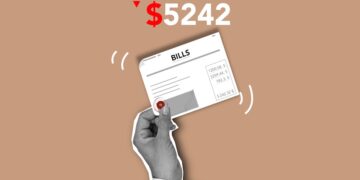Breaking the Cycle: Strategies to End Living Paycheck to Paycheck
Living paycheck to paycheck is a common financial scenario for many, wherein most or all of one’s income is spent on expenses, leaving little to no savings for future needs. This situation, often a result of insufficient earnings, excessive spending, or both, can place individuals in a precarious financial position, leaving them vulnerable to unexpected emergencies.
Understanding the Paycheck to Paycheck Cycle
The cycle of living paycheck to paycheck involves a continuous loop where your income is primarily allocated to current expenses, with little surplus for savings or investments. This financial predicament not only perpetuates immediate stress but also hinders long-term wealth accumulation and financial security.
Key signs that you are in this cycle include:
- Difficulty covering unexpected costs without resorting to debt
- Using the majority of your paycheck on or before your next payday
- Persistent worries over money
Common Reasons for This Cycle
- Lower Income: Earnings that barely cover necessary living expenses.
- High Expenditure: Overspending or high living costs that outpace income.
- Lack of Financial Planning: Insufficient budgeting and a lack of financial goals.
Effective Strategies to Break Free
To transition away from this paycheck-to-paycheck lifestyle, certain effective strategies can be employed. These strategies aim to reshape financial habits and improve one’s economic stability.
1. Budgeting and Expense Tracking
Understanding where your money goes is the first step in taking control of your finances. Creating a detailed budget that lists all sources of income against all expenses helps identify unnecessary expenditures that can be cut.
- Tools: Utilize budgeting apps or spreadsheets for regular monitoring.
- Goal: Aim to allocate a portion of income towards savings or debt repayment.
2. Building an Emergency Fund
One of the key strategies to break the paycheck cycle is creating an emergency fund. This fund serves as a financial safety net designed to cover unexpected expenses like medical bills or car repairs without the need to incur debt.
- Initial Target: Save at least $1,000.
- Long-term Goal: Build up to 3-6 months’ worth of living expenses.
3. Reducing Expenses and Increasing Income
To make room for savings, consider ways to cut down on your monthly expenses or increase your income.
- Reduce Expenses: Shop smarter, use discount codes, and cut down on luxury items.
- Increase Income: Consider part-time jobs, freelancing, or other sources of additional income.
4. Focus on High-Interest Debt
If you carry high-interest debt like credit card balances, prioritize paying these off quickly. These debts consume a significant part of your income through steep interest rates.
- Strategy: Apply the debt snowball or avalanche method to expedite repayment.
5. Continuous Learning and Financial Education
Expanding your knowledge on financial topics such as investing, savings, and budget management can profoundly impact your financial decisions and habits.
- Resources: Books, workshops, podcasts, and financial blogs.
Frequently Asked Questions
How much should I aim to save each month?
A general rule of thumb is to save at least 20% of your income each month. However, any amount saved is better than none, especially when starting.
What should I do if I cannot meet my basic needs?
Focus on increasing your income through overtime work, second jobs, or seeking assistance from social programs. Simultaneously, review and minimize any non-essential expenses.
Is debt consolidation a good option for managing debt?
Debt consolidation can be effective if it reduces the interest rates you’re paying and simplifies the payment process. However, it’s essential to not accrue additional debt simultaneously.
Conclusion: Future-Proof Your Finances
Breaking free from living paycheck to paycheck is achievable by adopting the right financial strategies, staying informed, and consistently applying best practices in budgeting and money management. This journey requires patience, discipline, and a commitment to long-term financial well-being.
With these strategies and a proactive approach, you can build a more secure financial future and escape the stress of living paycheck to paycheck. Start today by evaluating your financial habits and taking the necessary steps to change them. Your financial independence journey begins now.

























































